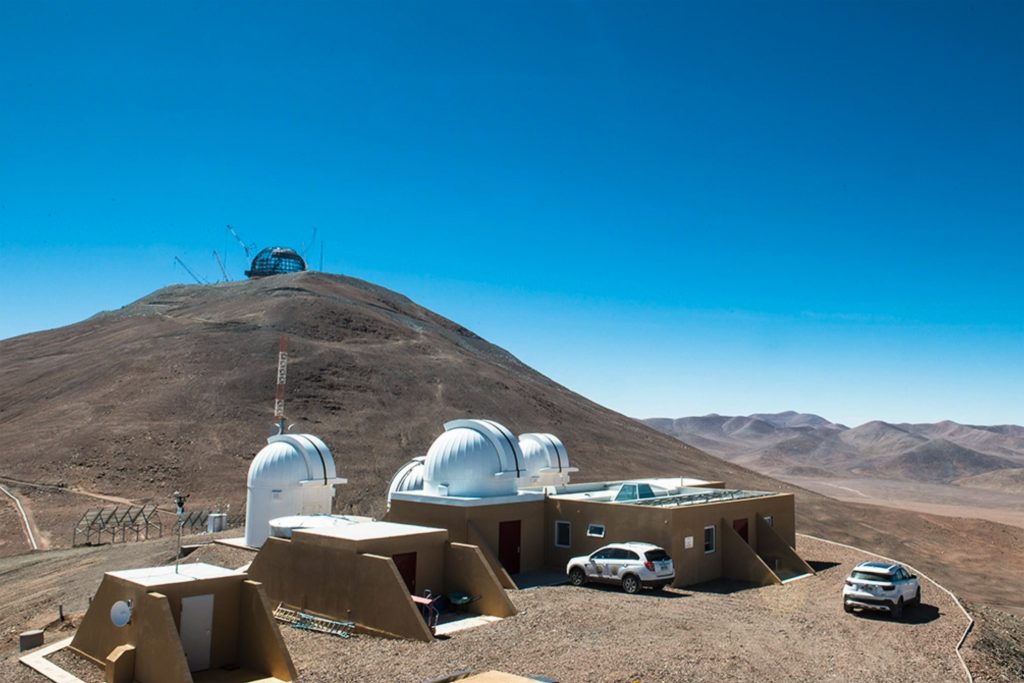#fast #dinosaurs #run #sports #scientist #find
In NextGen established scientists introduce you to a talent from the next generation. Today, paleontologist Anne Schulp (1974) introduces the new generation in the form of Pasha van Bijlert (1993). With physics simulations, the young biomechanist sheds new light on the movements of ancient dinosaurs.
New light on moving dinosaurs
Anne Schulp: ‘Pasha came to me as a student Human Movement Science and actually graduated as one dinosaur movement scientist. There has been speculation about how hard for a number of decades, since Jurassic Park T. rex could run. I have the feeling that Pasha is going to give a blow to that.’
‘How fast T. rex could run? I have the feeling that Pasha is going to give a blow to that’
‘Paleontology searches and describes fossils within geology and biology. It works like this: you find a fossil, you describe it and compare it with other animals. Furthermore, you might say something about evolutionary relationships, age and… that’s it. But with new techniques, points of view and creative approaches from a different field, you can ask questions of a fossil in a completely different way. That’s what Pasha does.’
‘Pasha looks at paleontological issues as a sports scientist. As a result, he brings innovative insights and techniques to research. I expect that our view of how dinosaurs moved will change significantly thanks to his work.’
Established name: Anne Schulp
The Netherlands’ most famous paleontologist Anne Schulp excavated a Tyrannosaurus rex with his team in the US in 2013. The fossil, which has been named Trix, was given its own stage in the Naturalis museum in Leiden, where Schulp works. He is also a professor at Utrecht University. Schulp is currently investigating fossils from North America (T. rex and Triceratops) and Angola (Mosasaurus).
New generation: Pasha van Bijlert
Pasha van Bijlert works as a researcher in the paleontology group at Utrecht University and at Naturalis. He makes 3D physics simulations to analyze the movements of animals (living and extinct). In 2021, Pasha published his first study examining the walking speed of Tyrannosaurus rex Trix.
With Pasha to Naturalis
‘Let’s go to Trix, the nicest place in the museum!’ Pasha walks from Bijlert with great strides to the last part of the dinosaur hall in Naturalis. There is the showpiece. The huge one Tyrannosaurus rex welcomes the visitor with an open mouth full of huge teeth.
‘Trix has been beautifully preserved. And that’s nice, because it allows you to see the muscle attachments very well,” says Van Bijlert, pointing to the rough, grainy parts of the skeleton. Once upon a time there were large muscles attached to it. ‘Do you see that lump on the leg? That is the attachment of the large tail muscle. That was very important for my research.’
Digital makeover of a dinosaur
During his graduation research, Van Bijlert, then a bachelor’s student in human movement sciences, built a three-dimensional model of Trix. He did this based on 3D scans made of the skeleton of the T. rex. Van Bijlert gave the model digital muscles. He could then use this to do physics calculations and make motion simulations.
In this way he unraveled Trix’s walking speed. This turned out to be 4.6 kilometers per hour. And that is what Van Bijlert still does: simulate moving animals with physics in order to understand the evolution of movement.
Trix inspires during boring lectures
How does a sports scientist get involved in the world of dinosaurs? It all started in a lecture hall in 2013, when Van Bijlert was studying medicine. “I was bored out of my mind and was on my phone during class.” He came across a news report that caught his attention: Naturalis digs up a T. rex in Montana.
‘I saw a field photo with Trix’s skull in a plaster package. And a team of paleontologists around it. Those people had started to follow their hearts, while I reluctantly studied for a profession that I wasn’t even enthusiastic about.’ Shortly afterwards, Van Bijlert quit medicine and started a new study: movement sciences.
Annika Verdam
Dinosaur Trix in the Natural.
Under the spell of dinosaur Trix
In the final year of his bachelor’s degree, Van Bijlert was faced with a choice: what was the subject of his graduation research? And there she was again, that Trix. The dinosaur was exhibited for the first time in the same year. ‘And I couldn’t keep my mouth shut about that. I kept talking about it during classes,” he says.
At that time, Van Bijlert was taking a minor in physics simulation, where you learn to make simulation models of human movements. ‘One of my teachers said: ‘If you like that dinosaur so much, just contact Naturalis.'” This is how Van Bijlert ended up with Anne Schulp, who gave him the opportunity to make a physics simulation of Trix
Usefulness of movement research
In addition to a better understanding of evolution, there are other applications for his dinosaur simulations, according to Van Bijlert. Think of robots. “I believe that the stable shape, build and movement of a dinosaur makes for a better bipedal robot for some applications than the human form often seen in modern robots.” But according to him, the dinosaur is also a means to get people enthusiastic about science. ‘I’m actually applying very hard physics and mathematics. But people still join in because it’s about dinosaurs.’
Life is moving
According to Van Bijlert, if you want to understand something about the evolutionary success of an animal, you have to look at how it moves. ‘Evolution is all about surviving long enough to pass on your genes. You move in almost everything you do. You need to be able to move to feed yourself, but also to flee if you are being chased. And to procreate.”
‘We have to find out how it is possible that these animals have walked on earth for so long’
Of all the animals, Van Bijlert finds studying upright dinosaurs with a long tail the most interesting. ‘These beasts have walked the earth for almost 170 million years. So they were clearly doing something right. Maybe that has something to do with the way they walk. So we have to find out.’
Tail as a suspension bridge
By far the best known upright dinosaur is the T. rex. The way this species moved cannot be compared to how modern animals do. ‘You still have animals with a similar tail, a crocodile for example, but it drags it on the ground.’
Pasha van Bijlert
Reconstruction of the tail muscle of T. rex, made by Van Bijlert.
‘The tyrannosaurus held its tail in the air like a kind of suspension bridge. That hanging tail influences the way the dinosaur must have moved. That was the idea behind our research.’
Testing on an emu
After his bachelor’s research, Van Bijlert was not yet finished with Trix. ‘We are now working on scientific publications about how fast tyrannosaurus could run. The simulations I made for this have actually been ready for publication for two years,” he says.
But before these become public, Van Bijlert focuses on living animals. “To get an idea of how confident we can be with my models, I first wanted to make a simulation of the emu, the Australian cousin of the ostrich,” he says.
Of the T. rex we don’t know exactly how strong and how heavy the muscles were. This has been measured for the emu. By omitting more and more of this known emu data from his calculations, Van Bijlert tests whether the model is reliable for extinct animals, about which we also have little information. In this way, his dinosaur simulations become more and more realistic. And Van Bijlert can bring the prehistoric giants back to life.
We know more and more about the prehistoric beasts that once thundered across the globe. For example, researchers from Naturalis discovered earlier this year that the triceratops lived in a herd. And in January 2024 there was finally a definitive answer the identity of this tiny T. rex.
Also read











